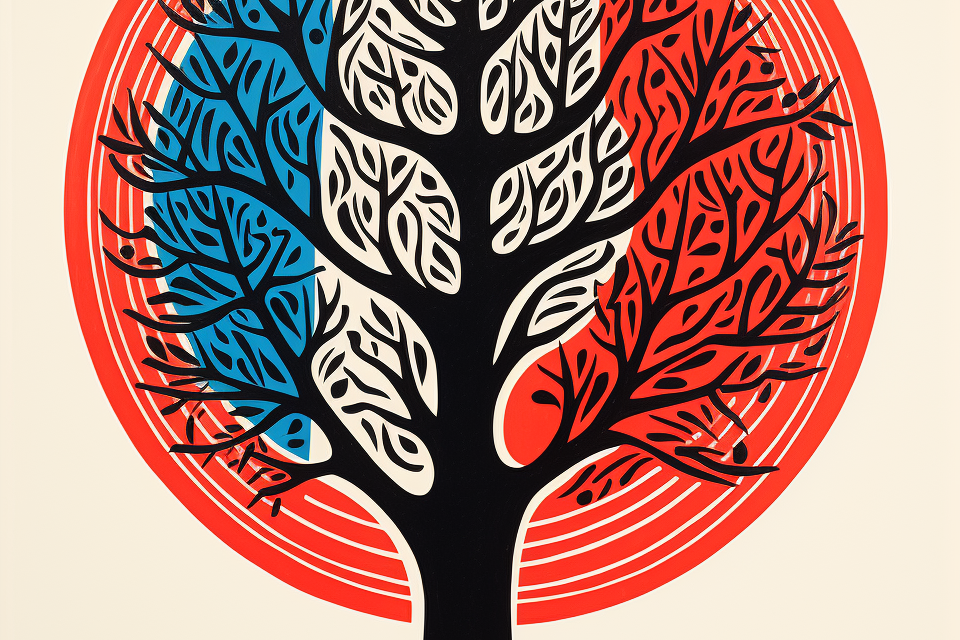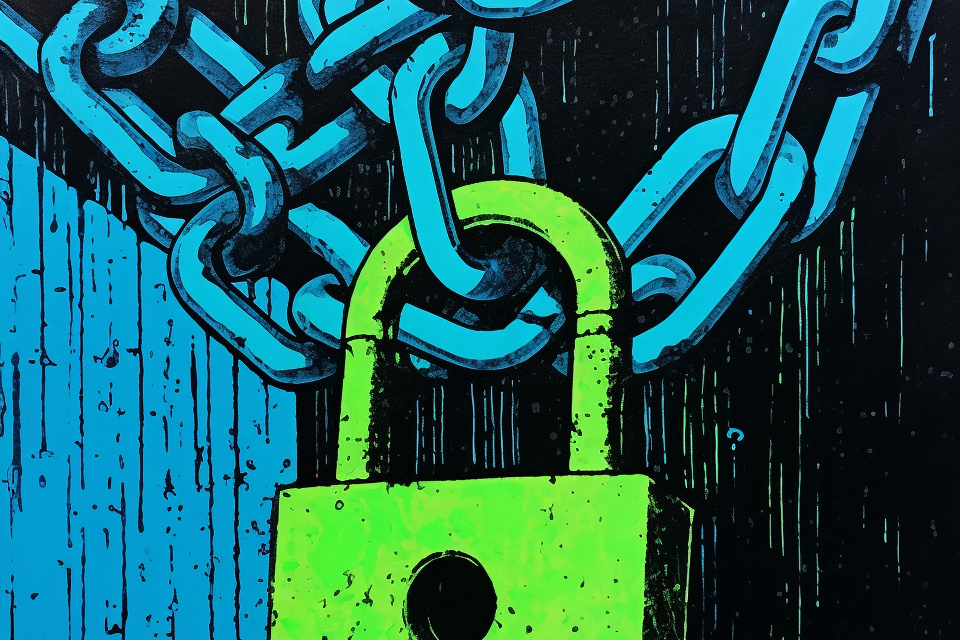The Power of Belief

We often underestimate the power of belief, yet our beliefs are the unseen architects that constantly shape our lives. From the moment we wake up to the time we go to sleep, our beliefs guide our perceptions, emotions, and actions. Think of them as the background music in a film scene—subtle but transformative, setting the entire mood of our lives.
Positive and Constructive Beliefs
Consider positive, constructive beliefs. These beliefs affirm our worth and capabilities. They’re the encouraging whispers that say, “You’ve got this,” when doubt creeps in. They celebrate our small victories and spur us to strive for even greater achievements. Such beliefs become self-fulfilling prophecies, fostering a cycle of well-being, success, and happiness. They’re like a diligent gardener, tending the soil to let the flowers of our potential flourish.
Self-Limiting Beliefs
Conversely, let’s talk about self-limiting beliefs. These are the insidious voices claiming we’re not smart or capable enough. These beliefs stifle us, urging us to play it safe, keeping us from not only achieving our goals but also from dreaming what might be possible. They’re like worn-out brakes on a powerful sports car, limiting our speed and direction, and keeping us on the narrow lanes of missed opportunities and regret.
Choosing Our Beliefs Wisely
Choosing our beliefs wisely is paramount. Essentially, we’re casting a vote for the kind of life we want, the emotions we aim to experience, and the actions we’re willing to undertake. Isn’t it prudent, then, to equip ourselves with empowering beliefs that can navigate us through life’s labyrinth of choices and challenges? Cultivating such beliefs is not just a good idea; it’s a cornerstone strategy for anyone aspiring to live a life filled with purpose, joy, and fulfillment.
The Formation of Beliefs
Beliefs are formed by a complex interplay of psychological processes that start early in life and evolve over time. Picture your brain as a sponge, absorbing information from an array of sources: your upbringing, education, experiences, social interactions, and even the media you consume. This diverse input is filtered through your established cognitive framework, a sort of database filled with previously-held beliefs and experiences. The outcome is a tapestry of beliefs that influence how you perceive and interact with the world around you.
The Influence of Cognitive Biases
For instance, when we’re young, our beliefs are like an untouched canvas. Parents, teachers, and cultural norms often apply the first strokes of color in the way we perceive things. As we encounter more ideas and perspectives, our canvas becomes more intricate. We start adding our own touches, shaped by personal experiences and insights. It’s akin to being detectives, collecting clues and determining our version of “truth” based on the evidence we gather.
However, our minds are not entirely impartial judges. Cognitive biases can sway how we form beliefs. Confirmation bias, for example, is the tendency to selectively choose information that aligns with our existing beliefs while ignoring contradicting data. If you’re convinced that you’re poor at public speaking, you’ll focus more on the lone person yawning during your speech rather than the attentive listeners, thus reinforcing your initial belief. The self-serving bias is when we attribute our success to ourselves but blame external circumstances for our failures. This bias insulates our self-esteem but can distort our belief formation process. If you win a game, you’re skilled, but if you lose, it’s the referee’s fault.
Understanding Belief Formation
Understanding the psychological roots of belief formation equips us with the tools to scrutinize our belief systems more critically. Being aware of these mechanisms enables us to question our assumptions and strive for a more balanced, accurate set of beliefs. This is crucial work for anyone aiming to navigate life’s complexities with clarity and wisdom—it’s not merely mental gymnastics.
The Ripple Effect of Beliefs
Beliefs are potent forces that create ripples in your life, far from being just static ideas gathering dust in your mind’s corners. To grasp these ripples’ magnitude, consider your thoughts, emotions, and behaviors. These three elements are akin to ballet dancers, each influencing and influenced by the others. The choreographer behind this intricate dance? Your beliefs.
Thoughts, Emotions, and Behaviors
Start by examining your thoughts. For instance, “I can learn and grow” is a positive belief that naturally fosters optimistic thinking. This mindset, which broadens your horizons to new possibilities and equips you with the mental capacity to innovate and problem-solve, is a powerful tool. It allows you to perceive hurdles not as roadblocks but as challenges to overcome.
Next, consider your feelings. Optimistic thoughts directly impact your emotional state, leading to feelings of joy, enthusiasm, and confidence. Such emotions make the journey worthwhile, driving you forward.
Finally, let’s explore behaviors. When positive thoughts and uplifting emotions dominate, your actions align with your goals. Instead of merely dreaming of writing a book, you’re drafting an outline. Rather than just wishing for a healthier lifestyle, you’re opting for a run or a salad over french fries.
The Connection to Well-Being
Well-being is a state of mental, emotional, and even physical health that makes life enjoyable. Research suggests a strong correlation between positive beliefs and well-being. This ripple effect also enhances self-esteem, resilience, and motivation. High self-esteem is akin to a robust immune system, enabling you to confidently navigate life’s challenges, fueled by your constructive beliefs affirming your worth and capabilities. Resilience, another gift of positive beliefs, is exemplified by figures like J.K. Rowling. Despite numerous rejections, her belief in her storytelling ability enabled her to persist until Harry Potter found success. Positive beliefs are the gusts propelling you forward, with motivation serving as the wind in your sails. Studies in educational psychology show that students with positive beliefs about their capabilities are more motivated and academically successful. Constructive beliefs are essential building blocks for optimism, emotional wellness, proactive behavior, and overall well-being.
Challenging Self-Limiting Beliefs
Challenging self-limiting beliefs isn’t exactly a leisurely stroll in the park. It’s more akin to excavating a fossil; a process that requires deep digging, meticulous care, and an alert eye for what you’re seeking. And the rewards? They’re monumental. Confronting these beliefs could mean the difference between a life confined by limitations and one brimming with possibilities.
The First Step: Self-Awareness
The first step in this vital endeavor is self-awareness. As the time-honored aphorism suggests, “know thyself.” This calls for turning the spotlight inward and scrutinizing your thoughts, actions, and emotions. In moments when you’re shying away from challenges, making excuses, or succumbing to fear, strive to catch yourself. Ask what belief is fueling this behavior.
The Power of Introspection
Here, introspection is your closest ally. Quiet moments that allow you to explore your inner world are invaluable. One of the most effective ways to facilitate this is through journaling. The act of transferring thoughts to paper can be extraordinarily enlightening. You’re engaging in a dialogue with yourself, not merely documenting thoughts.
If you feel constrained, jot down instances where you’ve felt this way. Question whether the belief is grounded in facts or assumptions. How has this belief influenced your life? Once you’ve identified a limiting belief, the subsequent step is to challenge it. This is where cognitive reframing becomes useful. It’s a technique that entails identifying and dismissing irrational or self-limiting thoughts. If your belief is on trial, you’re both the defense and the prosecution. Bring evidence, question its validity, and contemplate alternative interpretations.
The “5 Whys” Technique
The “5 Whys” technique is a problem-solving method that involves repeatedly asking “why” to uncover the root cause of a problem or, in this case, a self-limiting belief. Say you’re hesitant about starting a project. Ask yourself why. Perhaps you’re worried it won’t be perfect. Why does it need to be flawless? Maybe because you fear being judged. Why do you care about others’ judgment? Continue until you expose the core belief.
Practices for Increased Awareness
Becoming more aware of your thoughts through meditation and mindfulness practices can help you identify unhelpful beliefs. Even a few minutes of introspection each day can start to reveal the modifications needed in your belief system. Regardless of whether you’re journaling, employing cognitive reframing, or using the “5 Whys” method, approach this exploration with an open mind and a commitment to change.
Upgrading Your Belief System
Remember, your beliefs are the software that operates your life. It’s vital that you’re not functioning on outdated, faulty programming. To truly see new possibilities unfurl before you, it’s time to upgrade your belief system.
Cultivating Constructive Beliefs
Cultivating constructive beliefs isn’t akin to tending a garden, it’s an ongoing process. “You plant seeds, water them, provide sunlight, and weed out harmful elements.” The seeds of constructive beliefs can be sown using proven techniques, and can be nurtured into powerful, life-enhancing convictions.
Affirmations
Let’s start with Affirmations. These are your personal cheerleaders, always rallying for you when times get tough. It’s essential that Affirmations are specific and align with your values to be impactful. Instead of statements like “I am successful”, opt for more specific affirmations like “I am capable of achieving my career goals through dedication and hard work.” These affirmations seep into your subconscious and subtly shape your beliefs and actions.
Visualization
Affirmations and visualization are a powerful duo. This technique involves envisioning a scenario where you’ve achieved the goal of your positive belief. Preparing for a job interview? Consider spending some time imagining yourself answering questions with confidence and poise. Picture the interviewer nodding and smiling, indicating you’re the right fit. This mental rehearsal transforms your vision into a reality, priming your brain to act in ways that bring it to fruition. Neuroscience studies confirm that the brain doesn’t differentiate between a vividly imagined experience and an actual one, a fact you can leverage.
Positive Self-Talk
Positive self-talk is another essential tool. It’s not about showering yourself with empty compliments, it’s about challenging your self-critical voice and replacing it with a more optimistic narrative. If you find yourself thinking, “I can’t handle this,” rephrase it to, “This is challenging, but I have the skills to navigate it.” Such subtle shifts in language can nurture constructive beliefs.
Surrounding Yourself with Positive Influences
You’re known by the company you keep, right? A truth we can’t deny. Creating a nurturing environment for constructive beliefs involves surrounding yourself with positive influences. Seek out friends and mentors who resonate with your values and ambitions; they can provide the momentum needed to reach your goals.
Embrace Continuous Learning
Embrace continuous learning as part of your toolkit. By committing to learning, be it acquiring a new skill or expanding your knowledge, you affirm a belief in your own growth and potential. Attend that workshop, read that book, or enroll in that online course. Every bit of knowledge or skill you acquire enhances your abilities and boosts your confidence.
The Journey of Belief Transformation
Incorporating these techniques into your daily routine sets the stage for a belief system that not only empowers you but enriches your life in countless ways. These are investments in your most valuable asset: yourself. The beauty of beliefs is their malleability; they’re not set in stone but can be shaped like clay. So, it’s time to roll up your sleeves and start sculpting: that’s the essence of it.
Cultivating an Environment for Empowering Beliefs
We often perceive ourselves as the architects of our own destiny, but let’s not be deceived, that’s not entirely accurate. The environment around us wields a formidable influence over our beliefs. Like the air we breathe, it’s always present, subtly shaping us in myriad ways.
The Influence of Relationships and Media
Reflect on the individuals in your life, such as family, friends, and even coworkers. They are a daily part of your existence and can potentially impact you negatively. Have you noticed how your spirits lift when you’re with people you perceive as positive? That’s not mere coincidence; it’s the environmental influence exerting its force. It’s prudent to avoid naysayers as they can sow seeds of insecurity and pessimism in your mind.
Another potent influence is the media we consume. Our perception of the world is shaped by what we read, watch, and listen to. Exposure to negative news or content that reinforces stereotypes can shift your beliefs, regardless of your initial stance.
The Impact of Personal Experiences
Your experiences also contribute to your belief system. A series of failures may foster a self-limiting belief that success is beyond your reach, while overcoming hurdles can cultivate a belief in your own resilience and potential.
Nurturing Empowering Beliefs
How can you sculpt an environment that nurtures empowering beliefs? Primarily, be cognizant of the company you keep. Pursue relationships that empower you, challenge you positively, and inspire you to be your best self. If certain relationships drain you more than they enrich you, it may be time to reevaluate their place in your life.
Regarding media, exercise moderation. Opt for content that educates, inspires, or uplifts. Follow thought leaders who advocate personal growth. Bear in mind, your mind is akin to a garden, and you control what you sow in it. You can control your reactions to experiences, even though you can’t always control the events themselves. When confronted with a setback, instead of jumping to conclusions, ponder over what you can glean from the experience. View each experience as a stepping stone towards an improved version of yourself.
Establishing boundaries, both online and offline, is an effective strategy. This may mean muting social media accounts that exude negativity or limiting time in draining environments. Boundaries help create a nurturing space for your empowering beliefs to thrive.
Consider tailoring a physical environment that aligns with your aspirations and goals. This could be as straightforward as hanging motivational quotes on your wall or as elaborate as designing a workspace that enhances productivity and well-being. You can’t eradicate negative environmental influences entirely, but you can buffer their effects.
By nurturing your empowering beliefs, you allow your environment to resonate with your core values. You are not merely a product of your environment but rather a reflection of your values, and with purposeful effort, you can shape your environment to reflect you. Make informed decisions, act intentionally, and never underestimate the power of your surroundings in molding who you become.
The Power of Constructive Beliefs: Transformation Stories
We all enjoy a good transformation story. They captivate us, tales of individuals rising from adversity, fueled by a robust engine of positive beliefs. Compelling narratives often showcase the power of these belief systems.
Carol Dweck: A Journey of Growth
Carol Dweck, a renowned psychologist, is a prime example. She’s famed for her research on mindsets, finding that children who believed in their ability to improve were more resilient when faced with academic challenges compared to those who thought their capabilities were static. She applied this growth mindset to her own life, transitioning from a self-proclaimed shy researcher to an influential voice in psychology. The challenge lay in altering her assumptions about her potential and her possible impact on the world. By embracing a growth mindset, she not only transformed her life but also left a lasting imprint on the field of psychology.
Howard Schultz: From Adversity to Success
Consider the story behind Starbucks. Howard Schultz spent his formative years in the Canarsie Bayview Housing Projects in Brooklyn, an environment that could have easily bred self-limiting beliefs, given his parents’ struggle to make ends meet. Nonetheless, Schultz held on to the belief that he could create a better life. Despite confronting numerous challenges, including initial business failures and crippling debt, Schultz persisted, driven by his steadfast faith in his vision. His unwavering belief transformed a single coffee shop into an international conglomerate. His journey demonstrates that the right beliefs can be your most potent asset.
J.K. Rowling: Endurance in the Face of Rejection
Take J.K. Rowling, for instance. She went from being an unemployed single mother to one of the most successful authors in literary history. She faced rejection when trying to publish “Harry Potter,” but she held a firm belief in her story and her ability to weave it. This belief enabled her to endure poverty, rejection, and even clinical depression. When the world turned her down, she chose to press on.
Strategies for Reshaping Belief Systems
So, what strategies did these individuals employ to reshape their belief systems? Carol Dweck utilized her research to translate her academic understanding of the growth mindset into her personal life. Howard Schultz adopted a visionary approach, continually reinforcing his aspirations through strategic planning. J.K. Rowling relied on resilience and sheer force of will to avoid being defined by setbacks.
These stories attest to the power nestled within each of us. The common denominator is a deeply ingrained set of positive beliefs that guided these individuals through trials and towards unparalleled success. Each faced setbacks and moments of doubt, yet they clung to their beliefs and persevered. Constructive beliefs don’t imply an absence of doubt or challenge; rather, they serve as guiding stars, visible even in the darkest nights, leading us towards a dawn of our own creation.
As you contemplate your journey, bear in mind that the beliefs you cultivate today may well become the most crucial part of your story tomorrow.
Maintaining Constructive Beliefs: Consistency and Growth
Maintaining constructive beliefs isn’t a one-time task. It’s an ongoing commitment to consistency, reflection, and continuous growth.
Consistent Effort and Daily Affirmations
How can you ensure your positive beliefs remain consistent over time? The first key is consistent effort. Constructive beliefs, like muscles, need regular exercise to stay strong. You wouldn’t expect to stay fit after a single workout, similarly, maintaining a healthy mindset also requires continuous effort. One effective method for integrating constructive beliefs into your daily routine is through daily affirmations or journaling focused on your goals and positive self-talk.
Affirmations serve as a reflective mirror, enabling you to see yourself clearly. Make it a habit to assess your beliefs and attitudes every week or month. Are they still beneficial? Is there a negative or self-limiting belief lurking in your mind? Asking these tough questions are essential stepping stones to personal growth.
The Role of Personal Growth
Next, let’s consider the role personal growth plays in maintaining constructive beliefs. Growth and constructive beliefs reinforce each other. Achieving your goals bolistically boosts your positivity and confidence. Essentially, your constructive beliefs empower you to pursue growth and tackle challenges head-on. The pursuit of knowledge, whether through reading, courses, or stepping out of your comfort zone, is key.
Reflection and Meditation
Reflection techniques like journaling are valuable tools for introspection. It can be as structured or free-form as you like, but consistency is vital. Utilize this time to acknowledge your gratitude, celebrate your milestones, and pinpoint areas for improvement. It’s akin to a one-on-one meeting with yourself, an opportunity to refocus and reassess your life.
The practice of meditation is an excellent way to manage stress. The more familiar you become with your thoughts and feelings, the easier it becomes to identify negative or self-limiting beliefs. A few minutes a day can make a significant difference. If you’re tech-savvy, consider using apps to reinforce positivity. From goal-setting apps to those reminding you to engage in daily affirmations, technology can be a robust ally in maintaining constructive beliefs.
The Power of Support and Flexibility
The power of a strong support network cannot be overstated. Surrounding yourself with individuals who challenge, support, and contribute to your journey towards self-improvement can be immensely beneficial. Sharing your beliefs and goals with them increases accountability and provides opportunities for feedback and encouragement.
In a rapidly evolving world, rigid beliefs can be your downfall. Your beliefs should be fluid, adaptable, and open to scrutiny. Don’t just accept what you know; nurture it, question it, and allow it to evolve. The path to personal growth isn’t linear, but with the right beliefs, it’s a journey well worth undertaking.
Embracing the Journey of Constructive Beliefs
We stand at a crossroads, having traversed the landscape of constructive beliefs, their psychological roots, and the practicality of cultivating them. If there’s one lesson to learn from your beliefs, it’s their profound influence on your well-being, success, and happiness.
The inner narrative that navigates life’s unexpected twists and turns is the prism through which you perceive the world. Don’t just believe me, immerse yourself in it. To embrace this journey is to embark on a continuous exploration of who you are and who you could become.
It’s about affirming to yourself, “You no longer get to dictate my story,” due to the limiting beliefs you’ve carried. Despite the world echoing “No, you can’t,” it’s crucial to nourish and expand beliefs that counter, “Yes, you can.”
It’s remarkable that this journey is uniquely yours yet universally shared. Whether you’re a novice or contemplating a change, it’s never too late to delve into this exploration. So, guess what? You’re not alone. We’re all shaping our own internal landscapes. Embark on this journey today. Be it daily affirmations or profound conversations with inspiring individuals, take that step. The support is often ready and waiting, with tools and research readily available. Your decision to act, to proactively seek and nurture empowering beliefs, is the only piece left.
Go ahead. Just as I suggested that you should be the mapmaker of your own soul, start sketching a world filled with opportunities driven by constructive beliefs. The universe has an intriguing way of molding itself around our expectations. So, why not dream the extraordinary? Why not believe in me? The life you transform with your beliefs could be your own. That’s a life worth living to its fullest.



